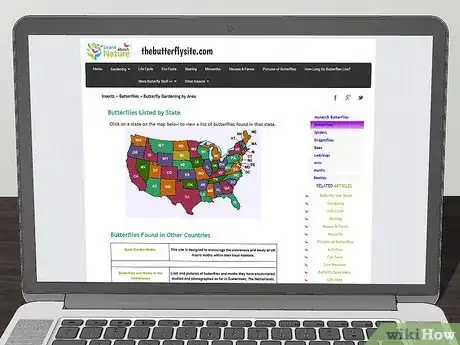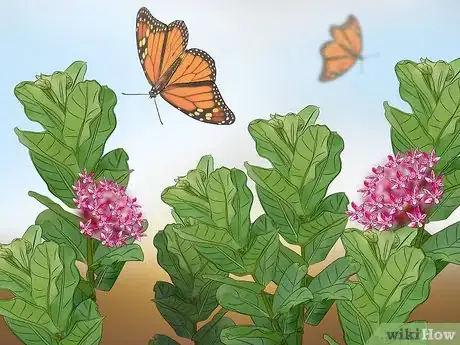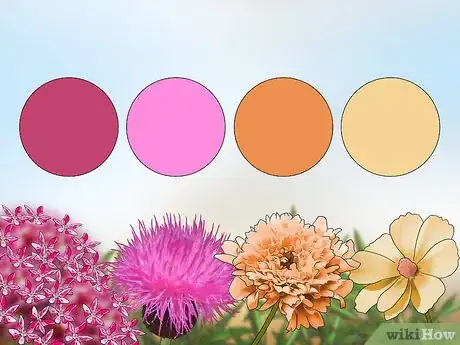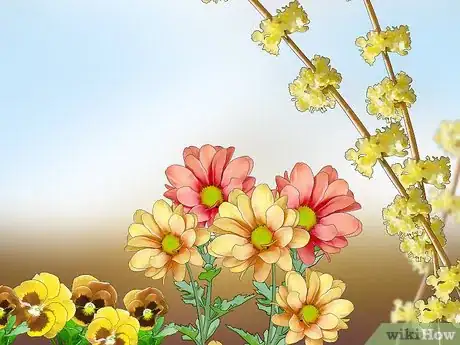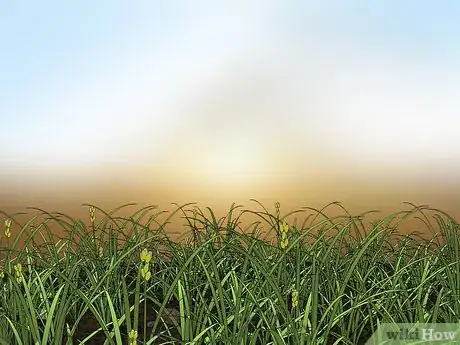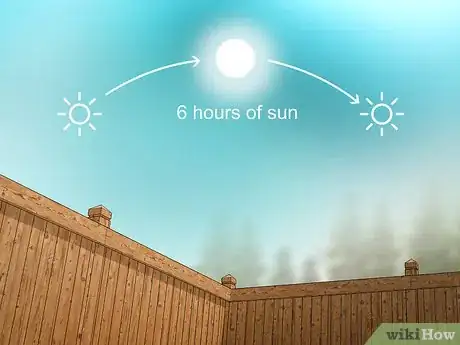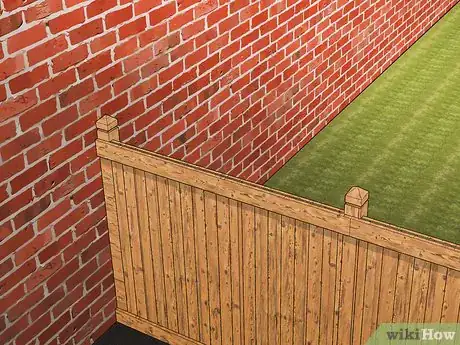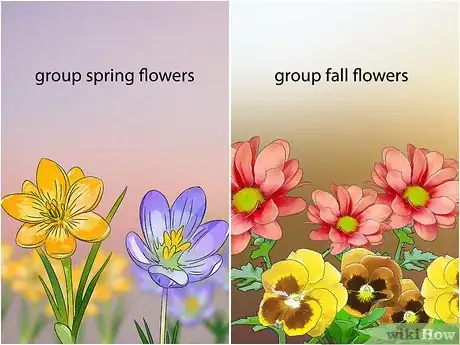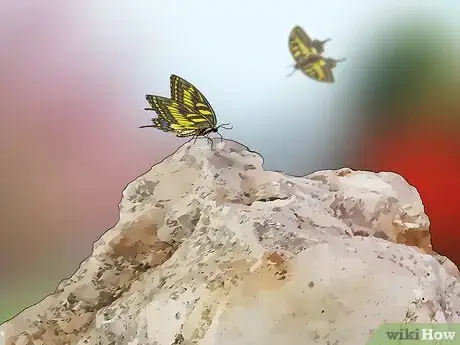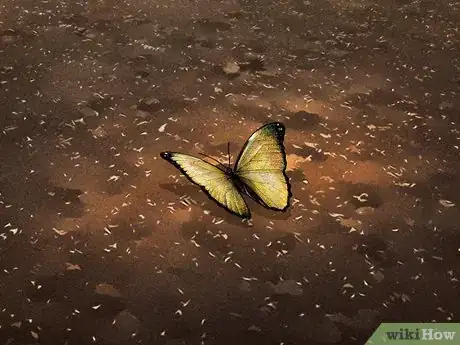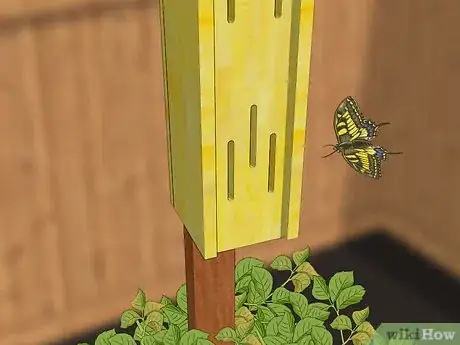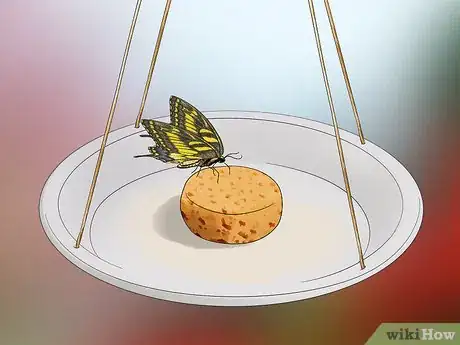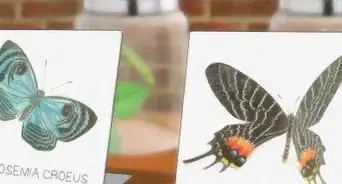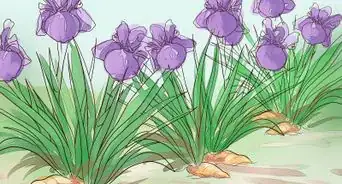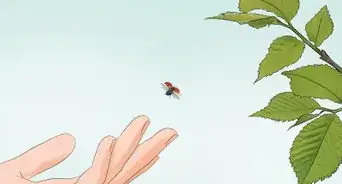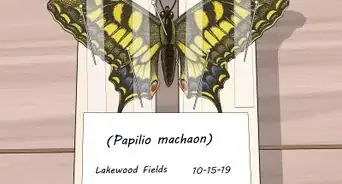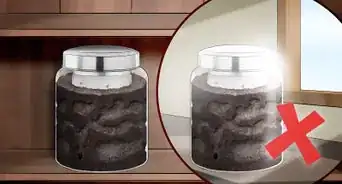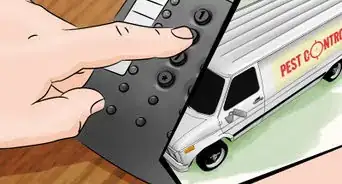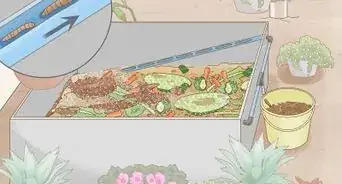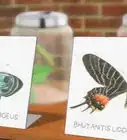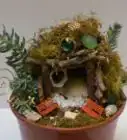This article was co-authored by Michael Simpson, PhD and by wikiHow staff writer, Amy Bobinger. Dr. Michael Simpson (Mike) is a Registered Professional Biologist in British Columbia, Canada. He has over 20 years of experience in ecology research and professional practice in Britain and North America, with an emphasis on plants and biological diversity. Mike also specializes in science communication and providing education and technical support for ecology projects. Mike received a BSc with honors in Ecology and an MA in Society, Science, and Nature from The University of Lancaster in England as well as a Ph.D. from the University of Alberta. He has worked in British, North American, and South American ecosystems, and with First Nations communities, non-profits, government, academia, and industry.
There are 9 references cited in this article, which can be found at the bottom of the page.
This article has been viewed 335,511 times.
A butterfly garden is a great way to attract a variety of different butterflies to your yard. Not only are butterflies are delicate and beautiful to look at, but since they pollinate plants, they’re actually really important to our ecosystem, too. When you’re planning your garden, research the plants that butterflies in your area prefer. Be sure to include nectar plants for their food, as well as host plants for caterpillars!
Steps
Choosing the Plants
-
1Research the species of butterflies that are native to your area. In order for the plants in your garden to attract butterflies, it’s essential to understand which species might be living nearby. To determine this, you can research online, read a butterfly field guide, or talk to local horticulturists and butterfly gardeners. If there’s a local butterfly garden in your area, you may want to plan a trip to see what’s planted there, as well![1]
- For a map of butterflies found in each U.S. state, visit https://www.thebutterflysite.com/butterfly-gardening-by-area.shtml.
- The butterflies in your area will typically feed on plants that are native to your region.
- Once you know which butterflies can be found in your area, use that information to decide which plants to include in your garden.
-
2Plant a variety of nectar plants for your butterflies to feed on. Adult butterflies get most of their food and moisture from the nectar produced by certain flowers. While some species prefer some plants over others, butterflies will often feed on any nectar-producing plants, especially those with brightly-colored flowers.[2]
- Some popular nectar-producing plants that will attract butterflies include purple coneflowers, milkweed, butterfly weed, asters, marigold, zinnia, cosmos, and lantana.[3]
Short on space? Grow your plants in containers instead of in the ground.
Advertisement -
3Choose host plants where your butterflies can lay eggs. Once you identify the butterflies that are native to your area, research where they prefer to lay their eggs. Then, include those host plants when you’re planning what you want in your garden. While adult butterflies aren’t always picky about their sources of nectar, they are extremely particular about where they lay their eggs. That’s because butterflies usually lay their eggs on the plants that their larvae feed on, and that usually consists of only 1 or a very few specific plants.[4]
- Adult butterflies typically lay their eggs on different plants than the ones they feed from themselves.
- For example, a monarch butterfly will only lay her eggs on milkweed, since that is the only food a monarch caterpillar will eat.
- Black swallowtails prefer to lay their eggs on dill, parsley, fennel, and carrot.[5]
- A Gorgone Checkerspot lays its eggs on the sunflower plant.
-
4Opt for plants with wide, flat clusters of brightly-colored, fragrant flowers. Not all of the plants in your garden have to be specific to the local butterflies in your area. Butterflies are attracted to bright colors, so consider that when you’re choosing plants, but you can include anything you wish in your garden. If you’re adding in more flowers, keep in mind that butterflies prefer plants with large clusters of blooms, since this provides an easy base for them to land on, especially if the clusters grow flat, like goldenrods, zinnias, verbena, or Spirea.[6]
- Butterflies especially like purple, pink, orange, and yellow flowers. However, some butterflies can’t see the color red, so be sure that’s not the only color you plant![7]
- The fragrance of the flowers will also help attract the butterflies to the garden.
-
5Include a variety of heights, colors, and shapes in your garden. Planting a diverse selection of plants will help attract more butterflies to your garden. If you plant a variety of colorful blooms, the butterflies will be more likely to see the garden from a distance. Also, you’ll be more likely to see multiple species of butterflies if you have a more diverse selection of food and host plants for them to enjoy.[8]
- A variety of plant heights will help your butterflies feel more sheltered.
- To identify plants, you can look at their flowers. Some field guides separate species by flower color, which can be a handy shortcut when you are trying to narrow the plant you have to a list of possible species.
- However, this approach might not be helpful for plants that have flowers that vary in color or are not flowering when you find them.
- In such cases, you can look at other features, such as whether the plant is short or tall, erect, spreading or climbing, and the shape and arrangement of leaves and flowers (if present). A dichotomous key will help you use these features to deduce which species it is you are looking at.
-
6Leave a nearby section of wild grass and wildflowers, if it’s possible. If you have the space, consider leaving a patch of ground somewhere near your garden where you grow the natural grass, wildflowers, and undergrowth that would occur in the wild. During periods of wind and inclement weather, butterflies typically take shelter in tall grass and shrubs. This patch will provide a natural hiding spot to keep your butterflies safe.[9]
- They’ll also hide here if any predators approach.
- If this isn’t possible, you may want to include a butterfly house in your garden instead.
Picking the Location and Planting the Garden
-
1Choose a spot that gets at least 6 hours of sunlight a day. As you’re planning your garden, spend a clear day watching the way the sun travels across your yard. Every hour or so, take note of which areas are in the sun, and which are shaded. Then, pick one of the sunniest spots as the location for your garden.[10]
- Butterflies are cold-blooded, so they require sunlight to warm them up throughout the day.
-
2Pick a location that’s sheltered from strong wind. If the butterflies are exposed to high winds, they’ll spend most of their energy just trying not to get blown around. Place your butterfly garden near a wall, a fence, or a wooded area to help them conserve energy so they can eat and lay their eggs.
- For example, if you have a shed and your area is frequently subjected to cold north winds, you could place your garden on the south side of the shed.
-
3Place the shorter plants in front with taller varieties in back. The butterflies will have an easier time reaching their food if you arrange your plants from shortest to tallest, almost like stair steps. Place larger bushes and shrubs in the back, with shorter flowers in the very front.[11]
- If you don’t have room to plant shrubs, try placing an arbor with vines near the back of your garden.
Tip: Since the caterpillars will devour their host plants as they grow, you may want to place them in the center or near the back of your garden. However, don’t move them too far away from the nectar plants, or the butterflies might be discouraged from laying their eggs there.
-
4Plant your flowers in large groups. Butterflies are pretty small, but they prefer big clumps of flowers. Try to group your flowers together in large masses. The butterflies will be able to see the garden from a distance, and you’ll get more visitors to enjoy.
- It’s fine to include different, non-butterfly plants in your garden. However, try to keep the flowers close together, as this will make feeding easier for the butterflies.
-
5Group flowers that will bloom at the same time. To make the most of your butterfly display, research what time of year each plant will bloom. Then, create sections out of the plants with the same flowering window so you’ll have bright groups of blooms opening at about the same time.[12]
- For instance, if some of your plants open in the late spring and others will bloom into the early fall, you could group your spring plants on one side of the garden, and your late-bloomers on the other side.
- If you have a small garden, you might not need to section it off.
Adding Other Butterfly-Friendly Elements
-
1Include 1 or 2 large, flat rocks in your butterfly garden. Butterflies love to soak up the sun while resting on a nice, warm rock, especially early in the morning. By including these rocks in your garden, the butterflies will have a chance to get warmed up before they start feeding for the day.[13]
- Try to place the rocks so the sun hits them first thing in the morning or late in the afternoon. This is when butterflies need the most warmth.
-
2Provide a patch of wet sand where the butterflies can drink. Butterflies typically won’t try to drink out of a deep water source like a pond or a birdbath. Instead, they prefer to get their moisture from damp earth. To help ensure your butterflies have plenty to drink, create a small area filled with sand, then pour water onto the sand whenever it seems dry.[14]
- If you don’t have a lot of space, you can fill a shallow saucer with sand, then add a little water every day or so, or as needed.
-
3Set up a butterfly box if you want to give extra shelter. A butterfly box is similar to a bird house, but it has slatted openings. You can hang your butterfly box in a tree, on the side of a shed, or place it on a stake if you’d like to put one in your garden. It will provide shelter to your butterflies during rough weather or at night when they’re sleeping.[15]
- The slatted openings should keep birds and bats from getting into the butterfly box.
- If you have a large garden, you may want to include more than one box.
-
4Put out a tray of fruit scraps if you want to provide extra food. While your butterflies should get all of the nutrients they need from the nectar plants in your garden, they may enjoy an extra treat if you’d like to include one. Early in the morning, place out a small tray filled with cut-up pieces of fruit, including the flesh and the peels.[16]
- Butterflies like Admirals and Red-Spotted Purples especially love sliced oranges, pears, or melons.
-
5Hang a butterfly feeder in your garden for a steady source of nectar. If you want to ensure your butterflies always have something to eat, even when your garden isn’t in bloom, you can hang a butterfly feeder in your garden. Fill the feeder with nectar, then place the feeder on a stake or hang it from a tree near your garden.[17]
- You can find butterfly feeders and nectar at most garden supply stores.
- You can also make your own butterfly food by mixing 1 part sugar with 1 part water. Bring the mixture to a boil, then wait for it to cool before you add it to the feeder.
- A hummingbird feeder won’t work for butterflies, since those are designed for the birds’ long, narrow beaks.
Community Q&A
-
QuestionWhat flowers are the best?
 Community AnswerIn my opinion, the butterfly bush is the best, since it is well known for attracting butterflies, though you can choose many others if you want.
Community AnswerIn my opinion, the butterfly bush is the best, since it is well known for attracting butterflies, though you can choose many others if you want. -
QuestionCan a butterfly garden be in a greenhouse?
 Community AnswerMaybe, if the butterflies have a very easy time getting in and out. Make sure they don't get trapped inside.
Community AnswerMaybe, if the butterflies have a very easy time getting in and out. Make sure they don't get trapped inside. -
QuestionCan I make a butterfly garden if I only have a balcony at my apartment?
 Community AnswerYes! Depending on how much space you have on your balcony, you can fill it with plants that will attract butterflies. It will be smaller and you might not have as many butterflies visiting, but it can still work.
Community AnswerYes! Depending on how much space you have on your balcony, you can fill it with plants that will attract butterflies. It will be smaller and you might not have as many butterflies visiting, but it can still work.
Warnings
- Butterflies are very delicate and are extremely susceptible to being harmed by pesticides. Whenever possible, use organic pest control solutions instead of harsh chemicals.⧼thumbs_response⧽
- Choose your nectar and host plants wisely, as some species (such as butterfly bush and tropical milkweed) are known to be invasive and others (such as hog weed and wild parsnip) can even be harmful to humans or the environment!⧼thumbs_response⧽
Expert Interview

Thanks for reading our article! If you'd like to learn more about butterflies, check out our in-depth interview with Shweta Sharma.
References
- ↑ http://nababutterfly.com/start-butterfly-garden/
- ↑ https://www.auduboninternational.org/resources/Documents/Fact%20Sheets/Wildlife%20and%20Habitat%20Management/WHM%20-%20Creating%20a%20Butterfly%20Garden.pdf
- ↑ https://www.thebutterflysite.com/butterfly-food.shtml
- ↑ https://www.bhg.com/gardening/design/nature-lovers/how-to-make-butterfly-garden/
- ↑ https://www.thebutterflysite.com/create-butterfly-garden.shtml
- ↑ https://www.fs.fed.us/wildflowers/pollinators/animals/butterflies.shtml
- ↑ https://www.southernliving.com/home-garden/gardens/flowers-attract-hummingbirds-butterflies-bees
- ↑ https://www.wildflower.org/learn/how-to/make-a-butterfly-garden
- ↑ https://www.auduboninternational.org/resources/Documents/Fact%20Sheets/Wildlife%20and%20Habitat%20Management/WHM%20-%20Creating%20a%20Butterfly%20Garden.pdf
- ↑ https://www.bhg.com/gardening/design/nature-lovers/how-to-make-butterfly-garden/
- ↑ https://www.auduboninternational.org/resources/Documents/Fact%20Sheets/Wildlife%20and%20Habitat%20Management/WHM%20-%20Creating%20a%20Butterfly%20Garden.pdf
- ↑ https://www.wildflower.org/learn/how-to/make-a-butterfly-garden
- ↑ https://www.auduboninternational.org/resources/Documents/Fact%20Sheets/Wildlife%20and%20Habitat%20Management/WHM%20-%20Creating%20a%20Butterfly%20Garden.pdf
- ↑ https://www.bhg.com/gardening/design/nature-lovers/how-to-make-butterfly-garden/
- ↑ https://www.auduboninternational.org/resources/Documents/Fact%20Sheets/Wildlife%20and%20Habitat%20Management/WHM%20-%20Creating%20a%20Butterfly%20Garden.pdf
- ↑ https://www.auduboninternational.org/resources/Documents/Fact%20Sheets/Wildlife%20and%20Habitat%20Management/WHM%20-%20Creating%20a%20Butterfly%20Garden.pdf
- ↑ https://www.austintexas.gov/sites/default/files/files/Parks/Zilker_Botanical/zbg_butterflies_feeding.pdf
About This Article
To create a butterfly garden, start by researching the kinds of butterflies that are native to your region. Then, plant a variety of nectar plants that those kinds of butterflies like to feed on, which will attract them to your garden. You should also research what types of plants the butterflies prefer to lay their eggs on and plant some of those as well. When you're choosing a spot for your butterfly garden, look for somewhere that is sheltered from the wind and receives at least 6 hours of sunlight a day. To learn how to attract more butterflies to your garden, scroll down!
